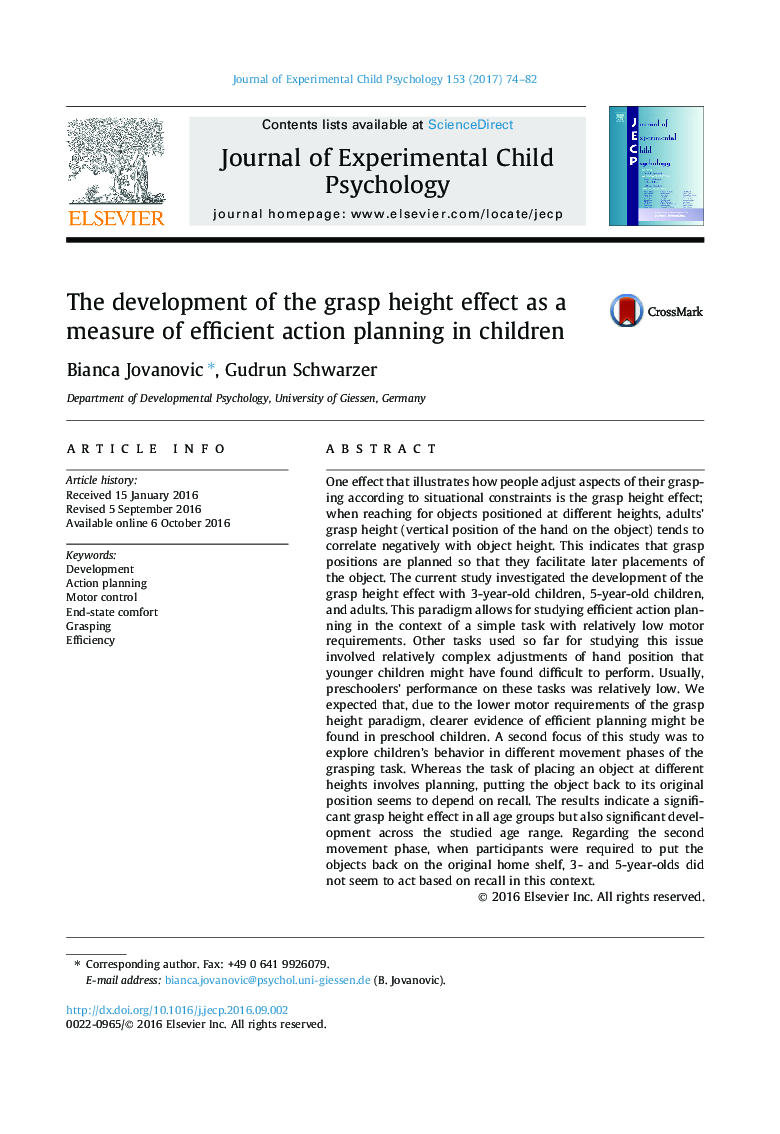| کد مقاله | کد نشریه | سال انتشار | مقاله انگلیسی | نسخه تمام متن |
|---|---|---|---|---|
| 5040003 | 1473459 | 2017 | 9 صفحه PDF | دانلود رایگان |
- Efficient action planning was studied using the grasp-height paradigm.
- The sample consisted of 3-year-olds, 5-year-olds and adults.
- There was a significant grasp-height effect in all age-groups, but no recall effect.
- There was also evidence of development in the performance across the age-range.
One effect that illustrates how people adjust aspects of their grasping according to situational constraints is the grasp height effect; when reaching for objects positioned at different heights, adults' grasp height (vertical position of the hand on the object) tends to correlate negatively with object height. This indicates that grasp positions are planned so that they facilitate later placements of the object. The current study investigated the development of the grasp height effect with 3-year-old children, 5-year-old children, and adults. This paradigm allows for studying efficient action planning in the context of a simple task with relatively low motor requirements. Other tasks used so far for studying this issue involved relatively complex adjustments of hand position that younger children might have found difficult to perform. Usually, preschoolers' performance on these tasks was relatively low. We expected that, due to the lower motor requirements of the grasp height paradigm, clearer evidence of efficient planning might be found in preschool children. A second focus of this study was to explore children's behavior in different movement phases of the grasping task. Whereas the task of placing an object at different heights involves planning, putting the object back to its original position seems to depend on recall. The results indicate a significant grasp height effect in all age groups but also significant development across the studied age range. Regarding the second movement phase, when participants were required to put the objects back on the original home shelf, 3- and 5-year-olds did not seem to act based on recall in this context.
Journal: Journal of Experimental Child Psychology - Volume 153, January 2017, Pages 74-82
